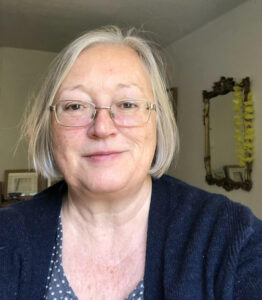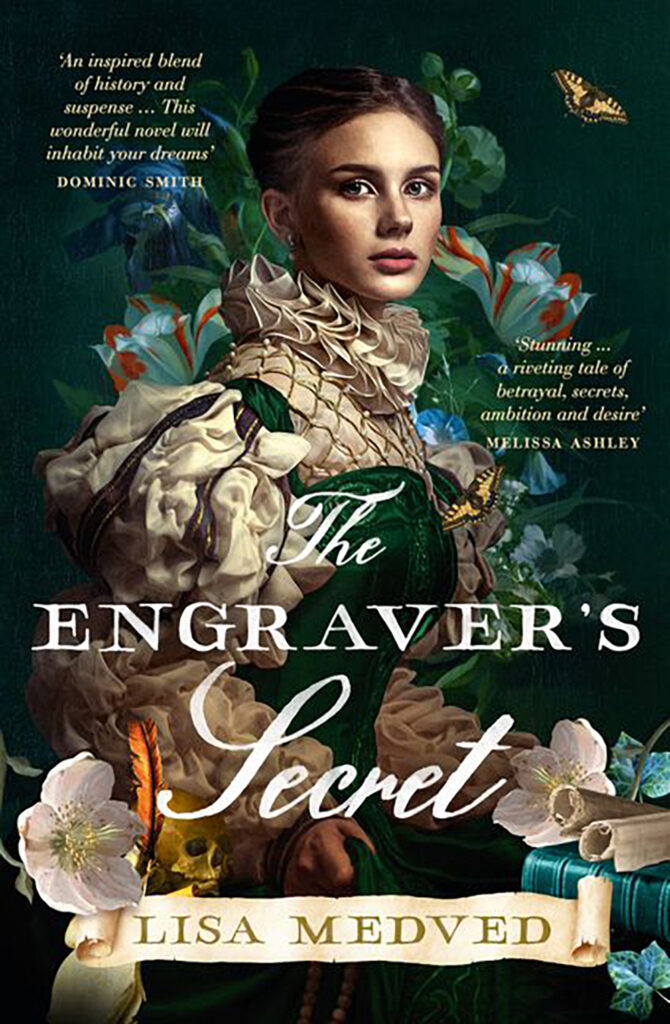Launch: Tracey Warr’s Love’s Knife
INTERVIEW BY NANCY TABER
Tracey Warr has published five previous medieval novels. She was an art curator and art history academic in the first part of her career. She was born in London and lives in southwest France. She is part of the HNS Interviews team and is leading on the organisation of this year’s HNS UK 2024 conference. Love’s Knife is her new novel and the first in a series of medieval murder mysteries. Read on for a special offer for readers of this interview.
How would you describe this book and its themes?
Beatriz de Farrera is a female troubadour in late 11th-century Toulouse. She is fighting for a place at court amid power struggles, disputes over the developing pilgrim routes to Compostela, and deceits around the rich trade in salt. When a brutal murder occurs, she must find the murderer to avert a great injustice.

What attracted you to writing a novel about a female troubadour in medieval Toulouse, Occitania (France)?
A female troubadour appeared as a minor character in my first novel, Almodis: The Peaceweaver, and several readers said they would like to see a novel where she was a lead character. Drawing on medieval literature is part of my writing process. I have been teaching troubadour poetry with MA students for the last few years and researching the trobairitz – the female troubadours. Almodis was also partly set in Toulouse and I live near that city and draw on its medieval vestiges – the recently discovered ruins of the counts’ palace and the pilgrim basilica, Saint-Sernin, which was being built in the period when my novel is set.
How did you go about conducting your research for the novel? What’s your strategy for bringing medieval Toulouse to life, a context which no longer exists but is nonetheless connected to contemporary France?
I asked Musée des Augustins in Toulouse if they had a map of the city in the 11th century. I tread the ground. I read a lot of contextual material on the period. I read poetry and looked at museum objects and illustrated manuscripts. Objects, images, maps and sites help me create credible worlds for readers to step into. A particular object is often an early inspiration for a novel I’m working on. In the case of Love’s Knife, it was a triple disc and pin silver brooch. For Almodis, it was a pink glass palm cup. For my second novel, The Viking Hostage, a ‘trigger’ object was a serpent Viking brooch. These objects are all in the British Museum, but other museums, such as Cluny in Paris and the museums in Toulouse, have also been important sources for my imagination.
How do maps inform your writing?
I drew on maps of medieval Occitania, medieval Toulouse, and of the pilgrim routes to Compostela. I also used a speculative reconstruction of the 11th-century Chateau Narbonnais, the count’s palace. Maps and building plans help me move around the city and palace with my characters and go on Beatriz and Roger’s journey from Toulouse to Poitiers and on to Conques, Uzès and Aigues Mortes. Since I spent a lot of my career as an art curator and historian, visual prompts are significant for my writing.
What’s your strategy for fictionalising the lives of real people? How do you thread in what is known from the historical record and what you yourself imagine, in the context of your narrative, particularly with a murder mystery?
There was plenty of real murder going on around the medieval courts in family rivalries. Philippa’s grandmother (Almodis) was murdered and her uncle Ramon Berenguer II, count of Barcelona, was murdered by his twin, but the murder in my novel is fictional.
I stick to the known facts about the historical people, such as Philippa of Toulouse and Guillaume of Aquitaine, but there are plenty of gaps and holes in the early medieval historical record for me to imagine into. I have to imagine what the characters, real and fictional, look like since there are few, and often very generic, portraits from this period. I draw on a mixture of portrait paintings and the people around me. I saw the face of my heroine, Nest ferch Rhys, for my Welsh Conquest trilogy, when I was travelling on a train in South Wales. For the heroine of Love’s Knife, Beatriz de Farrera, I used Whistler’s painting of Alice Butt to help me picture her.
What’s your writing process for writing a series? Do you have any advice for other writers who are considering a series?
Consider which of your characters in book 1 are going to carry over into the following books and ensure that readers want to know what happens to them next. These repeat characters are going to need to develop in each book, but also across the series. In Love’s Knife, Beatriz is 17 and has a lot of developing ahead of her. You need a story arc for each book and a longer story arc for the series. I found my initial research gave me material for the first three books. I keep notes on thoughts for books 2 and 3.

Do you have any advice for writers who are considering using Substack, particularly with respect to publishing chapter-by-chapter?
I was intrigued about serialising a novel and decided to experiment with it for Love’s Knife, publishing a chapter every Saturday on Substack. I thought I might reach new readers. I only had a few paying subscribers but they all said they really enjoyed receiving a chapter a week. So I might have another go at serialising in the future and find better ways to market it. The big advantage for me in posting every week was that it kept me writing and now I have a new book to show for it. Substack has also been a very good-looking and easy to use platform for my research posts for free subscribers. I’ve switched my quarterly newsletter to Substack now.
What question do you wish you were asked about Love’s Knife, the craft of writing fiction, or publishing? How would you answer it?
I like that! My question would be: Your novels are self-published. Can you tell us about that? And I would answer: My first five novels were published by a small independent press in the UK. They did a good job of making the novels look great and I was glad to be published. Over a decade, I built up a solid readership with my first publisher. During the pandemic, that publisher went bankrupt and all rights returned to me. I had some interest from other small publishers but decided, after the rather grievous experience of the bankruptcy, that I wanted control. I set up my own imprint, Meanda Books, and work with a fabulous cover designer, Jessica Bell. I already had a lot of the necessary skills – I’m tech-savvy from teaching, work as a professional editor and proofreader, have experience of marketing. I reissued all five of my previous novels last year, which was a lot of work and a steep learning curve, but I am earning more money and gaining more readers as a self-published author.
Or another question might be: Tell us about the deaf character in your novel. My grandfather was deaf and lipread. He was my childhood inspiration for being an avid reader and, then, a writer. Anna, the deaf character in Love’s Knife, has a different sensory experience of the events in the novel. Three chapters are written in her point of view. I researched medieval attitudes to disabilities and worked with an authenticity reader. Anna’s silent view of the world contrasts with Beatriz’s constant engagement, as a musician, with sound.
What advice would you give to aspiring historical writers?
Writing a novel is a long haul and will take you a year, four years, more. So you need to really enjoy your topic and your period and want to be immersed in it for a good long time.
What is the last great book you read? Why?
Amor Towles’ The Lincoln Highway. It is full of heart and I enjoyed every minute of reading it.
Special offer for readers of this interview: Send me proof of purchase of Love’s Knife (paperback or ebook) and I will send you a free paperback of Daughter of the Last King (the first book in my Welsh Conquest trilogy). info@meandabooks.com
![]()
HNS Sponsored Author Interviews are paid for by authors or their publishers. Interviews are commissioned by HNS.






